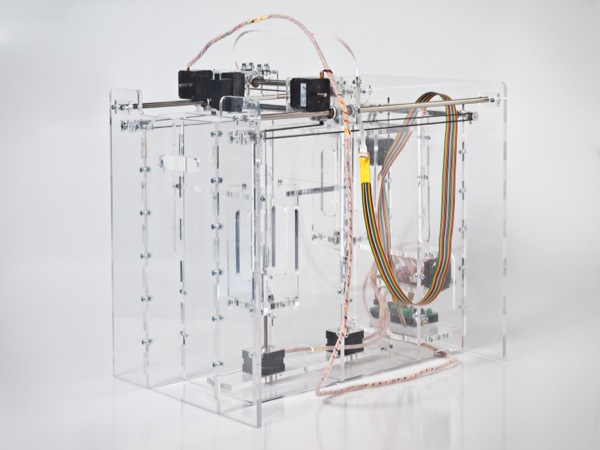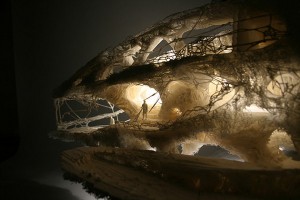Zefr helps content creators reach their hidden audience
By Philip Lelyveld
I spent an hour with Richard Radden, cofounder of Zefr (www.zefr.com, formerly MovieClips), a Venice, CA company that is “connecting fans and franchises for the good of all.”
MovieClips was cofounded by Rich Radden and Zack James about 3 years ago. MovieClips developed proprietary technology that allowed them to identify content on YouTube even if the video was distorted before uploading. They were able to license clips from studios and networks by making the case that, rather than taking down illegal content, they could flag it, help YouTube place appropriate ads against it, and send revenue back to the studios and networks.
Over time they added metadata to the clips and developed a UI so that the clips could be easily searched. As they were doing this, Rich, Zack, and their 30-person team discovered that there was a population of ‘superfans – people who created and uploaded content about the Studio and Network content – that was up to 10 times the size of the population that viewed the content on the authorized site.
In August, 2012, MovieClips changed its name to Zefr and pivoted to focus on helping movie studios, sports, TV, and music videos collect and monetize fan and professional postings on YouTube. Their clients include Warner Bros, Universal, UMG, Paramount, Columbia, Lionsgate, MGM, Sony Music, NASCAR, Miramax, The Weinstein Company, Dick Clark Productions, and SNL.
As they expanded into monitoring other types of content, they found that the same ‘superfan’ relationship applied to branded content; fans of a brand would make and upload content about the brand at a much higher rate than the number of people who interacted directly with the brand’s official online presence. Zefr started marketing their customer relationship management services to brands. Brand clients now include Audi, Canon, Mars, and T-Mobile.
Zefr is developing a new suite of SAS (Software As a Service) tools that will move them closer towards being able to help any type of content or brand to reach their creator-fan community. Rich showed me a prototype of a system that will allow any company to identify and communicate – on a massive one-to-one basis - with this larger population of fans. The software can also use YouTube data and proprietary Zefr applications to development extensive metric tools. It can compare the activities of the fans of their clients to the activities of their clients’ competitors, so that the client can interact more effectively with the entire population of potential customers. For example, they can determine which brand ‘owns’ a keyword in the unofficial culture within a superfan community.
With a staff that now tops 230 people, Zefr has taken over the warehouse off Abbott Kinney Blvd. in Venice that was previously the art studio of Ed Ruscha. The staff is composed on software developers, data scientists, and metadata entry personnel. Zefr is able to hire the low-pay metadata entry people from a large pool of local talent, rather than outsourcing overseas, by offering them a wide range of workplace perks. Aside from the usual basketball court, dog-friendly environment, and free food, they offer a hip location, a full health plan, monthly movies, and all-staff field/party trips. If a metadata entry person stays for a full year, Zefr management works to move him/her into a higher skilled, higher pay position.
I’ve asked Rich to let me know when they launch their SAS product so we can see its full range of capabilities. If the final product can produce all of the metrics that Rich demonstrated, and maintainthe well designed graphic interface that I saw, then this tool could be very useful to the ETC member’s efforts to market more effectively to Millennials.
LG’s eyeball-hugging curved 3D OLED TV will ship later this year
 [Philip Lelyveld comment: the story does not mention price.]
[Philip Lelyveld comment: the story does not mention price.]
At CES in January, Samsung and LG both revealed curved OLED TVs. And while Samsung's OLED TV didn't feature 3D, LG's curved screen did. (Not that we care, since 3D is a dud, anyway.) We didn't expect either company to start shipping these beauties anytime soon, but it looks like LG's had a change of heart. The company's planning to start selling the 55-inch curved OLED TV later this year.
See the full story here: http://www.dvice.com/2013-4-18/lgs-eyeball-hugging-curved-3d-oled-tv-will-ship-later-year
POWDER-BASED INKJET MACHINE OPENS NEW DOORS FOR 3D PRINTING
 “Unlike the MakerBot and RepRap printers that build objects by melting plastic, or the Form 1 that uses a laser to cure resin, Pwdr works just like a desktop printer,” explains Wired. “An HP inkjet deposits a liquid binder, mixed with ink, onto a layer of white gypsum powder. After the printhead passes, a roller bar drags a thin layer of powder across the surface and the process repeats a couple hundred, or thousand, times.”
“Unlike the MakerBot and RepRap printers that build objects by melting plastic, or the Form 1 that uses a laser to cure resin, Pwdr works just like a desktop printer,” explains Wired. “An HP inkjet deposits a liquid binder, mixed with ink, onto a layer of white gypsum powder. After the printhead passes, a roller bar drags a thin layer of powder across the surface and the process repeats a couple hundred, or thousand, times.”
“When completed,” the article continues, “the printer looks like a fish tank full of baby powder and the model needs to be carefully removed, dusted off, and dipped in clear glue that infiltrates the part and solidifies it. This process is essentially the same as what ZCorp 3D printers offer and opens the potential for hobbyists to create models featuring thousands of colors using a CMYK process, not the two or three offered by newer home user systems.”
See the full story here: http://www.wired.com/design/2013/01/pwdr-3d-printer-open-source/
Tubes – A Journey to the Center of the Internet (Book)
[Philip Lelyveld comment: this book is a throughly engaging tale of the history, structure, and map of the physical internet. The servers, switchers, cables, etc. At a high level,the internet is like home construction - a lot of simple pieces repeated over and over again, and the art is how well they are built together. The internet is not as geographically disbursed, or as immune to attack as I've been lead to believe.]
Tubes – A Journey to the Center of the Internet
By Andrew Blum
2012
Selected quotes from the first half
Pg. 47 – on the origin of the internet
I asked (UCLA Prof. and ‘father of the internet’) Kleinrock about this: Why isn’t essence a word we typically talk about in the context of the Internet itself? It’s more often the opposite that thrills us: the network’s ease at instant reproduction, its ability to make things “viral,” with the consequence of threatening not only the aura but also our desire for it – leading us to watch a concert through a smartphone screen. “For the same reason people don’t know when it was created or where it started, or what the first message was,” he said. “It’s an interesting psychological and sociological commentary that people are not curious about it. It’s like oxygen. People don’t ask where oxygen comes from.”
Pg. 71 – on living in Palo Alto
When I lived there, the faithful who fill the cafes always reminded me of priests in Rome, fingering smartphones rather than rosary beads, but similarly sticking close, for reasons both practical and spiritual, to the center of power. They are all there to connect: the gambling venture capitalists, the Stanford engineers, the lawyers and MBAs, and the start-up junkies who smell the future like bloodhounds.
Pg. 107 – on describing the internet
The writer Christine Smallwood is on to something when she points out that “the history of the Internet is a history of metaphors about the Internet, all stumbling around this dilemma: How do we talk to each other about an invisible god?”
Pg. 107 – on the South Park “Over Logging” episode
…the squat, obnoxious little characters faced a particularly extreme case of a familiar dilemma: the Internet breaks, everywhere. First they try to figure out if this is really happening, but “there’s no Internet to find out there’s no Internet!” a character deadpans.
Pg. 118 – on Internet traffic flow
From out here, the Internet appears to have no texture, no grain; with rare exceptions, there’s no “weather” – conditions don’t change day to day.
Yet looked at from within, the Internet is handmade, one link at a time. And it’s always expanding. The constant growth of Internet traffic requires the constant growth of the Internet itself, both in the thickness of its pipes and the geographic reach of individual networks. For the engineers, that means a network not busy being born is busy dying.
Pg. 120 – the human side of the internet architecture
A NANOG (North American Network Operators’ Group) meeting is the human manifestation of the Internet’s logical links. It exists to cement the social bonds that underscore the Internet’s technical bonds – a chemical process aided by ample bandwidth and beer.
[You can see all the information you need to ‘peer’ your network with facebook at www.facebook.com/peering]
Pg. 134 – on internet exchanges
I can’t say I was surprised that the Internet was run by wizards – it had to be run by somebody. But I as surprised by how few they were.
Pg. 179 – on fiber cables
It reminded me how much the Internet’s physical presence was defined by the spaces between – whether inside the routers, or at the building point of entry.
Too Big To Know (book)
Too Big to Know, Rethinking Knowledge now that the facts aren't the facts, experts are everywhere, and the smartest person in the room is the room, by David Weinberger, 2011.
The author also cowrote ClueTrain Manifesto. This book has an equally limited world view from which it makes all sorts of projections. He spends a lot of the early portion of the book defining "facts" in a way that ignores how hard science - as opposed to the softer social sciences - works, although he throws in hard science cases to cover the shortcoming.
Here are a few good, useful quotes from early in the book.
"Transform the medium by which we develop, preserve, and communicate knowledge, and we transform knowledge."
"If we've always had information overload, how have we managed? Internet scholar Clay Shiry says: "It's not information overload. It's filter failure." If we feel that we're overwhelmed with info ration that means our filters aren't working. The solution is to fix our filters, and Shirky points us to the sophisticated tools we've developed, especially social filters that rely upon the aggregated judgements of those in our social circles."
"Filters no longer filter out. They filter forward, bringing their results to the front. What doesn't make it through a filter is still visible in the background."
It’s Best Not To Imagine the Awful Ways This Virtual Water Could Be Used
[Philip Lelyveld comment. So much technology to deliver the illusion that you are getting something!]
See the full article here, but the video has it all: http://gizmodo.com/5966581/its-best-not-to-imagine-the-awful-ways-this-virtual-water-could-be-used
The History of Film (graphic)
[Philip Lelyveld comment: this graphic is an interesting bit of trivia. The author spent 5 years developing it!]
This graphic chronicles the history of feature films from the origins in the 1910s until the present day. More than 2000 of the most important feature-length films are mapped into 20 genres spanning 100 years. Films selected to be included have: won important awards such as the best picture Academy Award; achieved critical acclaim according to recognized film critics; are considered to be key genre films by experts; and/or attained box office success.
See the graphic here: http://www.historyshots.com/film/index.cfm
A New Chip to Bring 3-D Gesture Control to Smartphones
This week, Microchip Technology, a large U.S. semiconductor manufacturer, says it is releasing the first controller that uses electrical fields to make 3-D measurements.
The low-power chip makes it possible to interact with mobile devices and a host of other consumer electronics using hand gesture recognition, which today is usually accomplished with camera-based sensors. A key limitation is that it only recognizes motions, such as a hand flick or circular movement, within a six-inch range.
Perhaps most interesting, the controller could easily go into electronics that don’t have a camera, including car dashboards, keyboards, light switches, or a music docking station.
The controller comes with the ability to recognize 10 predefined gestures, including wake-up on approach, position tracking, and various hand flicks, but it can also be programmed to respond to custom movements.
Napster, Udacity, and the Academy
[Philip Lelyveld comment; this is an interesting, albeit unneccessarily word, article on Massively Open Online Courses (MOOCs))
That’s because the fight over MOOCs is really about the story we tell ourselves about higher education: what it is, who it’s for, how it’s delivered, who delivers it. The most widely told story about college focuses obsessively on elite schools and answers a crazy mix of questions: How will we teach complex thinking and skills? How will we turn adolescents into well-rounded members of the middle class? Who will certify that education is taking place? How will we instill reverence for Virgil? Who will subsidize the professor’s work?
MOOCs simply ignore a lot of those questions. The possibility MOOCs hold out isn’t replacement; anything that could replace the traditional college experience would have to work like one, and the institutions best at working like a college are already colleges. The possibility MOOCs hold out is that the educational parts of education can be unbundled. MOOCs expand the audience for education to people ill-served or completely shut out from the current system, in the same way phonographs expanded the audience for symphonies to people who couldn’t get to a concert hall, and PCs expanded the users of computing power to people who didn’t work in big companies.
Udacity may or may not survive, but as with Napster, there’s no containing the story it tells: “It’s possible to educate a thousand people at a time, in a single class, all around the world, for free.” To a traditional academic, this sounds like crazy talk.
3D-printed home of the future resembles a cave dwelling
This web-like structure looks fragile at first glance, but is in fact based on an algorithm that mimics the way bones grow in our bodies. That algorithm causes the growing structure to direct extra material to the points of greatest stress within the structure, and tells them to form stronger bonds in those areas. The result of that algorithm as applied to the ProtoHouse concept is a series of cave-like dwellings tucked away in micro-columns under the home’s long cantilevered deck.
The multi-family home of the future, as per Softkill, is composed of 30 discreet sections, the dimensions of which were chosen based on the size of the flatbed truck needed to transport them to the construction (or, should we say, assemblage) site. Each section was modeled to interlock with the others, which means that no additional adhesives would be required during assembly. That is, without a doubt, a revolutionary idea, even as far a prefab homes go.
See the full story here: http://www.tgdaily.com/sustainability-features/67413-3d-printed-home-of-the-future-resembles-a-cave-dwelling
Pages
- About Philip Lelyveld
- Mark and Addie Lelyveld Biographies
- Presentations and articles
- Tufts Alumni Bio
